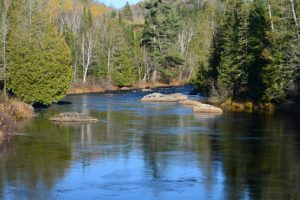5 Tips for getting your pond ready for the spring:
As the weather warms up, you can start thinking about preparing it for the spring and summer. You can start un-winterizing your backyard fish pond. This means you can undo anything you did to protect your pond during the cold winter season. Clean your pond and start recalculating your pond water. Below we have five tips for your spring pond maintenance.
1. Plan for Improvement:
 This is the perfect time of the year to plan for some improvement for your pond. Do you have a fountain or waterfall? You may want to add one if you don’t already have a fountain or waterfall in your pond. This is a good way to add some oxygen to your water and also make it look more attractive and fun. Perhaps add a new energy-efficient water pump. There are many ways to improve your pond and there is no better time to do so. Everything you have wanted to do all winter to make your pond better can be improved.
This is the perfect time of the year to plan for some improvement for your pond. Do you have a fountain or waterfall? You may want to add one if you don’t already have a fountain or waterfall in your pond. This is a good way to add some oxygen to your water and also make it look more attractive and fun. Perhaps add a new energy-efficient water pump. There are many ways to improve your pond and there is no better time to do so. Everything you have wanted to do all winter to make your pond better can be improved.
2. Get ready to feed your fish:
As your water temperature rises above 50 degrees, you may want to start feeding your fish more frequently, ideally three times a day. Feeding wheat germ-based foods is ideal during the early spring. Use the TetraPond feeding thermometer to help guide you with food selection. This will help your fish to transition into the warmer weather feeding. Good quality wheat germ products are easily digestible compared to animal-based feed. Remember that your feeding routines will change with the time of the year, so it is important to keep that in mind.
3. Check your pond’s ammonia and nitrate contents:
During the spring, your fish will start metabolizing the food faster, and so, it’s important that you check the ammonia and nitrate contents in your fish pond. A rapid increase in ammonia and nitrates in your fish pond can be toxic for your aquatic organisms. In addition, you may find that the plant matter in your pond has died off or has reduced during the winter. It’s important that you clean any decomposed plant matter and maintain the water quality of your fish pond. Needless to say, this is of utmost importance to keep your pond thriving.
4. Remove Sludge from the bottom of your pond:
 During the winter, dead leaves and other organic matters can accumulate at the bottom of your pond making the water toxic. Use a vacuum to remove sludge and dead leaves from the bottom of your pond. If the sludge is too much for you to clean with a vacuum, you may have to drain your pond entirely and clean it. If you need to clean your pond entirely, make sure you store your pond water and keep the ecological balance. Pump water into a container and cover it with a net. Refill the pond with the water after cleaning your pond, to keep the balance of your pond water algae growth.
During the winter, dead leaves and other organic matters can accumulate at the bottom of your pond making the water toxic. Use a vacuum to remove sludge and dead leaves from the bottom of your pond. If the sludge is too much for you to clean with a vacuum, you may have to drain your pond entirely and clean it. If you need to clean your pond entirely, make sure you store your pond water and keep the ecological balance. Pump water into a container and cover it with a net. Refill the pond with the water after cleaning your pond, to keep the balance of your pond water algae growth.
5. Add more plants to your pond:
Adding water plants to your pond will help maintain ecological balance and provide natural food for your fish as they purify the pond water naturally. Add barley straw early in the season to effectively control excessive algae growth in your pond water.
Conclusion:
This is the right time for you to start cleaning and getting your backyard fish pond ready for the spring and summer. As temperature rises, your fish pond’s ecological activities and the metabolism of your fish will increase. It’s important that you take proper care of your pond, clean any debris and sludge to maximize the benefits from your fish pond and this way your fish will have the best possible living conditions.
 P.S: to learn more about raisings fish in your backyard fish pond, join our FREE webinars. Also, check out our EAT Community for tons of information related to a wide variety of topics.
P.S: to learn more about raisings fish in your backyard fish pond, join our FREE webinars. Also, check out our EAT Community for tons of information related to a wide variety of topics.
Don’t miss this amazing EAT YOUR DIRT Online Conference! 30+ SPEAKERS TALK DIRTY ABOUT SOIL TO GET YOU GROWING YOUR DREAM GARDEN –http://bit.ly/2mxLF0v
Source: Worldwide Aquaculture




I must say it was hard to find your page in search results.
You write interesting posts but you should rank your website
higher in search engines. If you don’t know how to do it search on youtube:
how to rank a website Marcel’s way